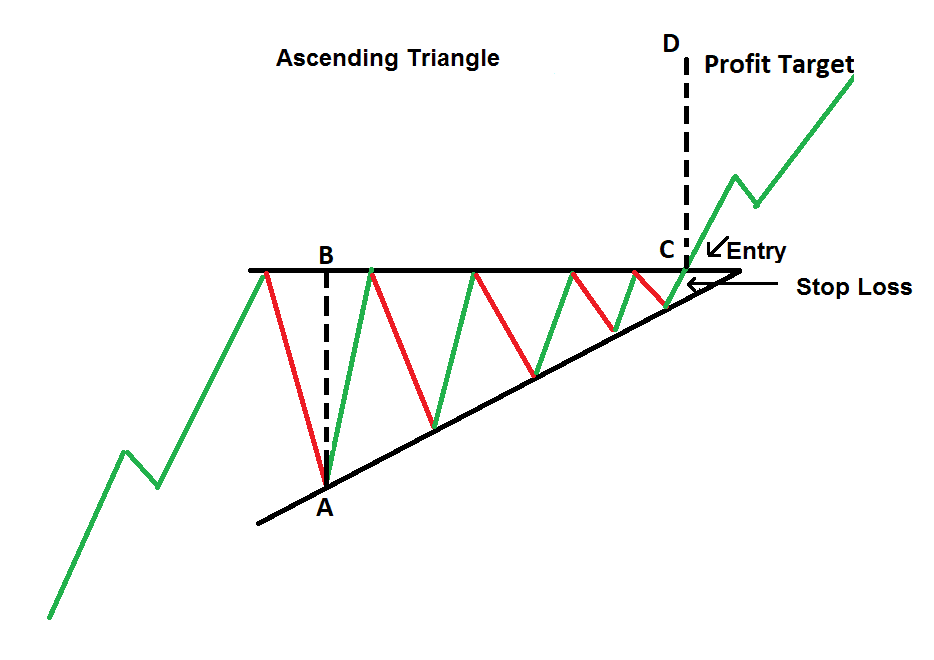Forex trading strategies for using the Ascending Triangle pattern: Approaches for trading with the Ascending Triangle chart pattern.
The world of forex trading is a dynamic and fast-paced environment, where traders seek to capitalize on the fluctuations of currency exchange rates. One of the tools at a trader's disposal is technical analysis, which involves studying price charts and patterns to forecast future price movements. The ascending triangle pattern is a popular chart formation that can provide valuable insights for traders looking to make informed decisions. In this article, we will delve into the intricacies of the ascending triangle pattern and explore various trading strategies that can be employed to harness its potential.
Table Content
I. Understanding the Ascending Triangle Pattern
II. Trading Strategies for Ascending Triangle Patterns
1. Breakout Confirmation Strategy
2. Measuring the Pattern for Target
3. Using Moving Averages
4. Utilizing Oscillators
III. Risk Management
IV. Footnote
Understanding the Ascending Triangle Pattern
The ascending triangle pattern is a bullish continuation pattern that forms when the price of an asset is making higher swing highs while encountering a strong horizontal resistance level. This creates a triangle-like shape on the chart, as the upper trendline (formed by the swing highs) converges towards the horizontal resistance level. The lower trendline is drawn by connecting the higher lows. This pattern signifies a potential period of consolidation before a potential breakout to the upside.

The ascending triangle pattern represents a battle between buyers and sellers. The price struggles to breach the resistance level, but each attempt results in higher lows, indicating increasing buying pressure. This pattern is often considered a bullish sign, as it suggests that buyers are gaining ground and a breakout to the upside could be imminent.
Trading Strategies for Ascending Triangle Patterns
1. Breakout Confirmation Strategy: One of the most common strategies used with ascending triangle patterns is the breakout confirmation strategy. Traders using this approach wait for a clear and decisive breakout above the horizontal resistance level. This breakout is often accompanied by increased trading volume, signifying strong market interest. Once the breakout occurs, traders can enter a long position, expecting the price to continue its upward movement.
\However, false breakouts can occur, where the price briefly moves above the resistance level but then retreats back into the pattern. To mitigate this risk, traders often wait for a candlestick to close above the resistance level before entering a trade. This helps confirm the legitimacy of the breakout.
2. Measuring the Pattern for Target: Another approach is to use the ascending triangle pattern to estimate a potential price target for the breakout. Traders can measure the height of the triangle (vertical distance between the highest and lowest points of the triangle) and add it to the breakout point. This projected distance provides an approximate target where the price might move after the breakout.
It's important to note that while this method can provide a rough target, other factors such as overall market conditions, economic news, and geopolitical events can also influence price movements.
3. Using Moving Averages: Moving averages are commonly used in forex trading to smooth out price data and identify trends. Traders can combine the ascending triangle pattern with moving averages to enhance their trading strategy. For instance, if the price is trading above a long-term moving average and an ascending triangle pattern forms, it could be a strong indication of an impending bullish breakout.
Moving averages can help traders filter out noise and confirm the overall trend direction. They can also serve as additional support levels, reinforcing the idea of a potential breakout.
4. Utilizing Oscillators: Oscillators, such as the Relative Strength Index (RSI) or the Moving Average Convergence Divergence (MACD), can offer valuable insights when trading ascending triangle patterns. These indicators help traders identify overbought or oversold conditions, providing clues about potential reversals or continuations.
When using oscillators in conjunction with the ascending triangle pattern, traders can look for divergence between the oscillator and the price. For example, if the price is forming higher lows within the pattern while the oscillator is forming lower lows, it could indicate weakening bullish momentum and suggest caution.
Risk Management:
While the ascending triangle pattern can offer valuable trading opportunities, it's crucial to implement proper risk management techniques. Trading involves inherent risks, and not all patterns lead to successful outcomes. Traders should set stop-loss orders to limit potential losses in case the trade goes against them.
Footnote:
In summary, the ascending triangle pattern is a powerful tool in a forex trader's arsenal. It provides insights into potential bullish continuation patterns and breakout opportunities. However, like any trading strategy, it's important to combine the pattern with other forms of analysis and to practice disciplined risk management. By doing so, traders can harness the potential of the ascending triangle pattern and increase their chances of making informed and profitable trading decisions in the dynamic world of forex trading.











Discussion